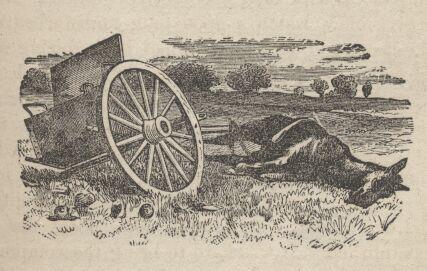The 1861 mail contract listed this station as Point Lookout, and other sources also identify the site as Lookout Pass and Jackson's. A Mr. Jackson served as stationkeeper at Point Lookout, which saw Pony Express operations halted in June and July of 1860 because of the Pyramid Lake War. In 1876 Horace and Libby Rockwell lived in a log house at the site, which Fike and Headley suggest had possibly served as the station. In 1979, the Rockwells' pet cemetery, enclosed by a metal fence, still existed south of the station site. (NPS)
Point Lookout/Lookout Pass Station (N40 07 10.7 W112 34 35.2) (M) vandalized
Location: NW1/4SE1/4 Section 13, Township 8 South, Range 7 West, Salt Lake Meridian, about 8 ¼ miles from Rush Valley.
Also called Point Lookout, General Johnston’s Pass and Jackson’s, the station is on BLM land. Above a flat on the west side of Lookout Pass (General Johnston’s Pass in the days of the Pony Express) you find the marker for the location . A rock alignment and the trace of the old road can be seen between the stone monument and a dam built to catch water from a small spring.
Originally, Lookout Pass was identified by Simpson as General Johnston’s Pass. The mail contract called it Point Lookout. From the top of the pass one can look west into the desert at what was to become known as Piute Hell. In May 1860, the Pah Ute War began, caused apparently because of white encroachment and depredations. For a short time, the Express was completely shut down (June-July). This “war” was finally settled after the Civil War when soldiers were sent west to quell the Indian uprisings.
Dog cemetery or other structure at Point Lookout An Egan employee, Fredrick W. Hurst, chronicles a station near the pass as being “Jackson’s Station” in Brush Hollow. By 1876, the survey records show the site to be settled by Horace Rockwell (O.P. Rockwell’s brother) and his wife, Libby. Reportedly in 1885 and since about 1870, the Rockwells occupied a small log house, possibly the old station house. A small cemetery plot, to the south, with iron railings apparently contains the remains of Rockwell’s pet dogs. No other physical remains can be found at the site.
An employee of Howard Egan stated that Egan built a small two-room log house here in April of 1860, but that the station was in ruins by the following September.
A few years later, Horace Rockwell, brother of Orrin Porter Rockwell, and his wife Libby lived in a small log house at Lookout. They had no children, and Aunt Libby, as she was called, kept several dogs upon which she doted. The stone enclosure a short distance to the south was built to protect the cemetery where her beloved dogs are buried. Three emigrant graves are also said to be found within. An entertaining story is told of a time when one of Aunt Libby’s beloved dogs was sick. She sent to Tooele, about 40 miles away, for the nearest doctor. She sent the message that one of the ranch hands was critically ill, knowing that old Doctor Dodds would never make the trip to treat a dog. When he arrived, late at night, he was nearly apoplectic to find he had rushed out there for a sick dog. Aunt Libby just smiled and gave him a $20 gold piece, and everyone was happy.
To Tophet 28th September
On a cool and cloudy morning, which at 10 AM changed into a clear sunny day, we set out, after paying $3 for three feeds, to make the second station. Our road lay over the seven miles of plain that ended Rush Valley: we saw few rabbits, and the sole vegetation was stunted sage. Ensued a rough divide, stony and dusty, with cahues and pitch holes: it is known by the name of General Johnston's Pass. The hills above it are gray and bald headed, a few bristles of black cedar protruding from their breasts, and the land wears an uninhabitable look. After two miles of toil we halted near the ruins of an old station. On the right side of the road was a spring half way up the hill: three holes lay full of slightly alkaline water, and the surplus flowed off in a black bed of vegetable mud, which is often dry in spring and summer. At "Point Look-out," near the counterslope of the divide, we left on the south Simpson's route, and learned by a signpost that the distance to Carson is 533 miles. The pass led to Skull Valley, of ominous sound. According to some, the name is derived from the remains of Indians which are found scattered about a fine spring in the southern parts. Others declare that the mortal remains of bison here lie like pavement stones or cannon balls in the Crimean Valley of Death. Skull Valley stretches nearly southwest of the Great Salt Lake plain, with which it communicates, and its drainage, as in these parts generally, feeds the lake.. (p 453-4)
